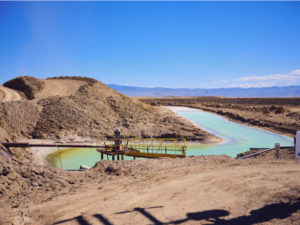
Lithium prices are rising at the fastest pace in years. The electrification of the vehicle fleet is boosting demand while supply has been constrained by limited investment in new projects and supply-chain bottlenecks.
What is America’s plan for a potential lithium age? It looks to be as incoherent as our policy toward oil, natural gas, and coal. Policymakers want more electric, but environmental opposition and permitting are limiting new supply.
Thankfully, lithium is abundant so it is just a matter of getting resources developed. Amrith Ramkumar explains in The Wall Street Journal:
The challenge for lithium producers is that it takes many years and heavy investment to get projects off the ground, creating mismatches between quickly growing supply and demand. Prices soared in 2017 and 2018, only to fall rapidly after companies ramped up output.
Some analysts expect a similar pattern to play out this time, but only if producers increase capacity and sentiment cools off.
“There’s enough lithium out there. The issue is the investment required to get there,” said Eric Norris, president of Albemarle’s lithium unit, on the company’s earnings call last month.
Deal making in the sector is on the rise. Koch Strategic Platforms, part of billionaire Charles Koch’s conglomerate Koch Industries Inc., earlier this month invested $100 million in Standard Lithium Ltd. , a company that is working with a German firm to produce lithium chemicals in Arkansas. Koch Strategic Platforms has made several similar investments in startups and the battery supply chain.
In November, Mr. Evans’s company Lithium Americas outbid Chinese battery maker Contemporary Amperex Technology Co. —known as CATL—to reach a deal to acquire an Argentina-focused lithium producer for about $400 million.
Mining giant Rio Tinto PLC this summer pledged more than $2 billion to develop a lithium project in Serbia, but thousands of protesters in the European nation recently took to the streets to oppose the government potentially allowing the company’s extraction efforts that could harm the environment.
It was the latest example of environmental opposition possibly delaying permitting and production of a commodity that could help decarbonize the economy, analysts said.
“We have to strike a balance between overall global environmental benefits and local impacts,” a Rio Tinto spokesman said in a statement. “We will not trade one over the other.”
Some analysts see the flood of money piling into the sector eventually pushing supply up and cooling the rally. Citigroup analysts project demand will outpace supply this year and next year before production tops consumption through 2025.
What impact might a surge in lithium prices have on the electric-vehicle market?
But red-hot sentiment could still fuel price gains well into next year, some analysts say.
“It’s more about the perceptions that market players have, not the real shortages of the material,” said Lukasz Bednarski, principal research analyst at IHS Markit focused on lithium. He expects a price correction at some point next year.
Read more here.




